Some of the most revealing slides from a Drug Enforcement Administration presentation on how to hide evidence chains have nothing to do with parallel construction, and instead show the DEA’s doubling-down on the narrative that marijuana is a dangerous, addictive substance with no medicinal value whatsoever.
The 2011 presentation, obtained by MuckRock user C.J. Ciaramella, was a two-hour module on the constitutional viability of a secret evidence management method. A year before the passage of Colorado’s Amendment 64 to legalize marijuana for recreational use, a counselor from the DEA’s Denver office claimed that pot has no discernible medicinal value.
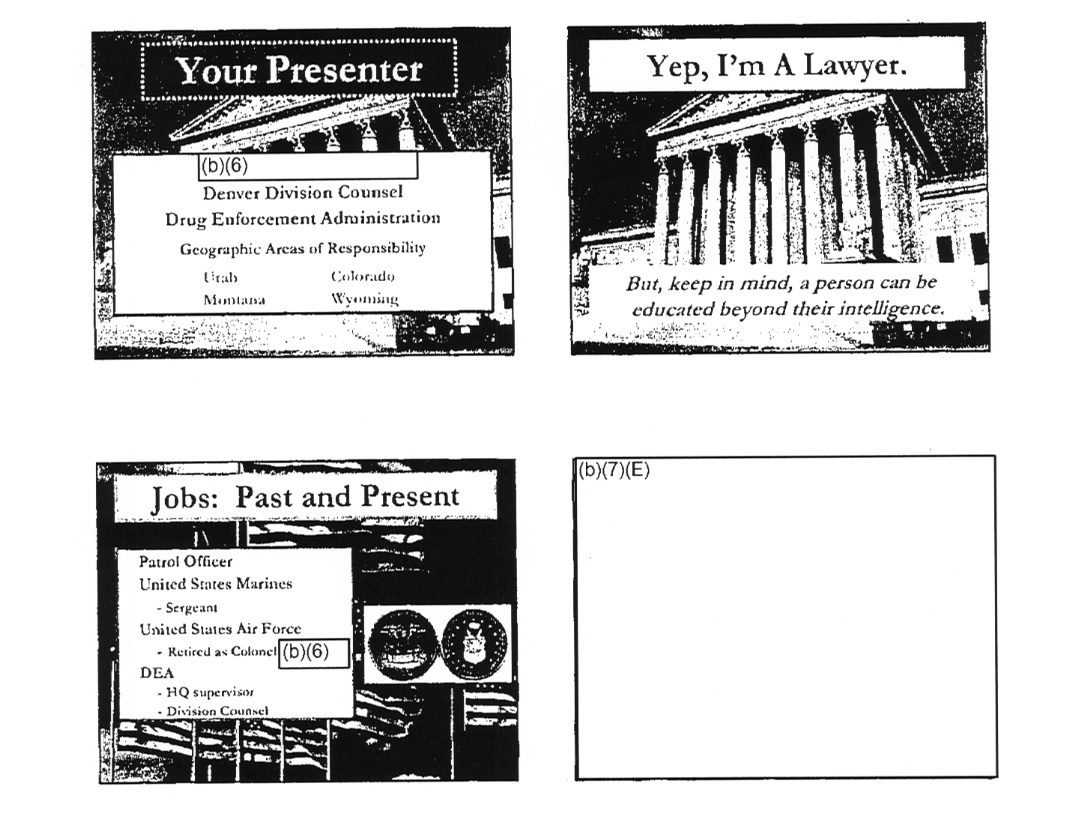
After reviewing such tactics as the protective sweep and routine traffic stops for collecting evidence, the slides veer into justification for enforcing the Controlled Substances Act, the federal legislation passed in 1970 that lumps marijuana and heroin into the same class of illicit substances. This section of slides points first to the October 2009 Department of Justice memo that directs DOJ investigators to focus on marijuana trafficking, since such activity “provides a significant source of revenue to large-scale criminal enterprises, gangs, and cartels.” Accordingly, the Denver DEA slides emphasize that the agency “seeks to dismantle and/or disrupt the highest level of violators” rather than focus on low-level users.
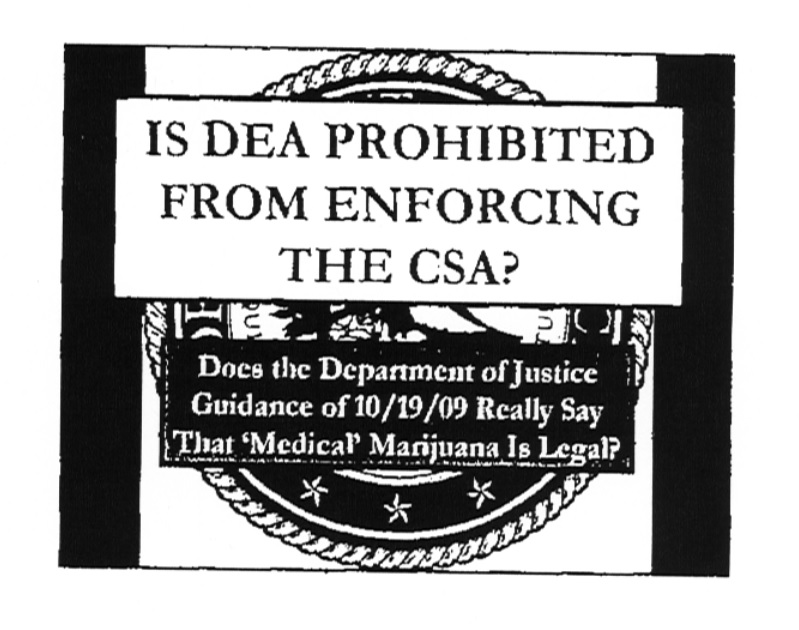
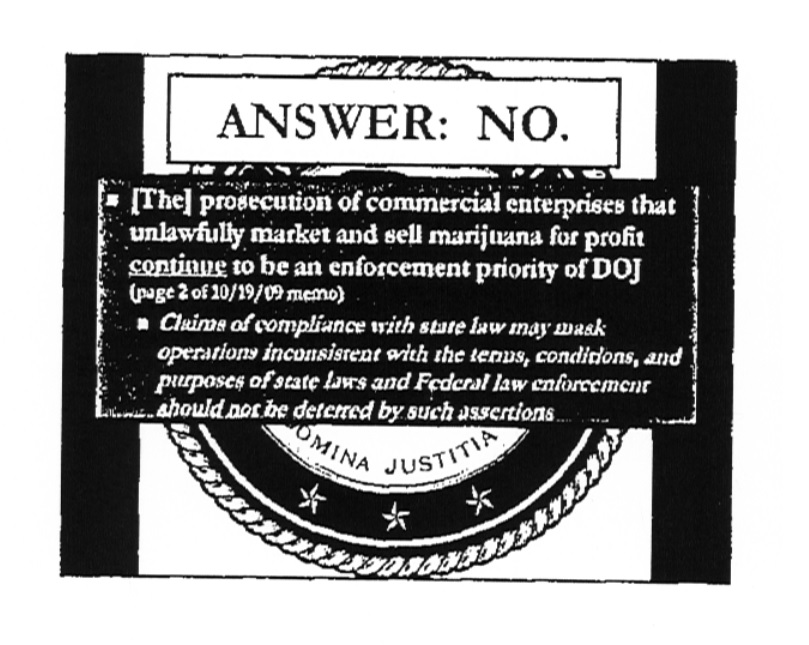
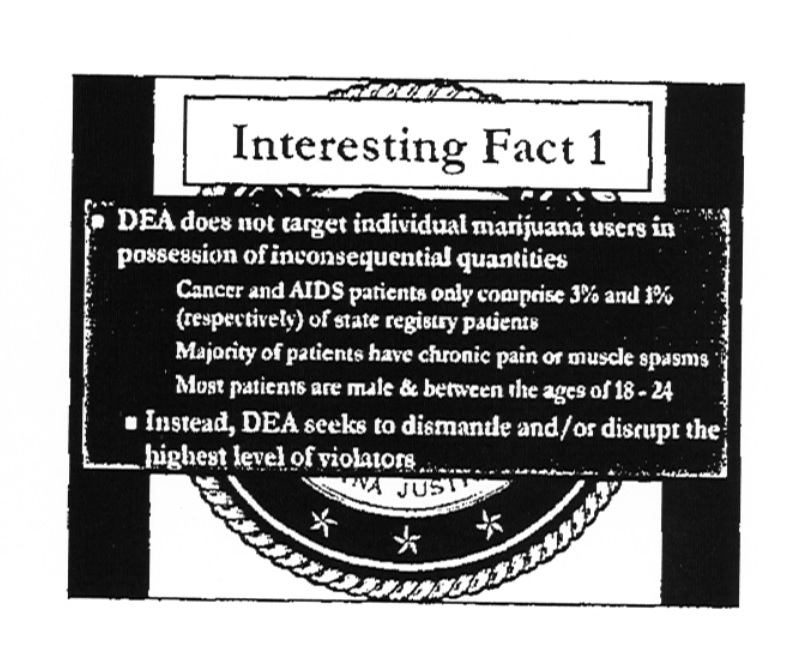
From there the presentation moves abruptly away from policy matters into bold scientific assertions about the individual health impacts of marijuana use.
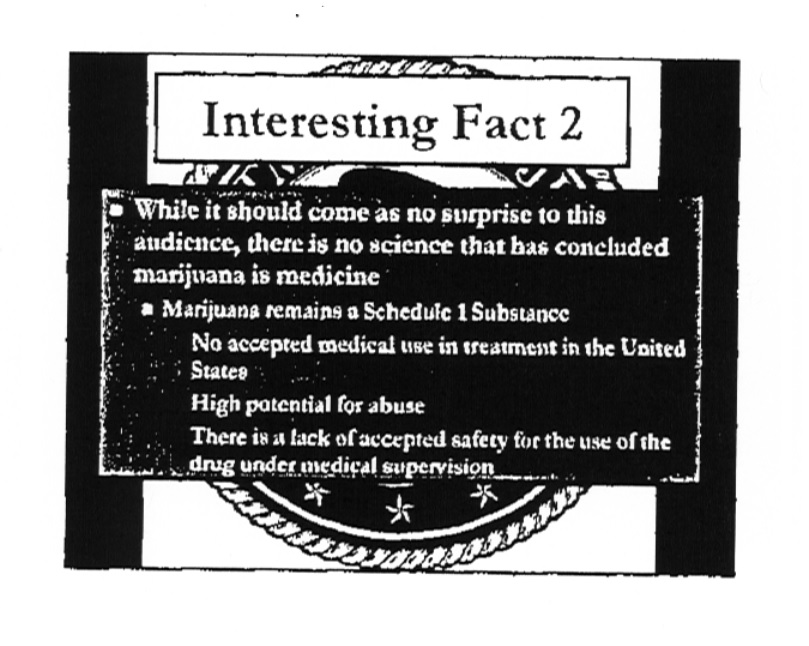
“While it should come as no surprise to this audience,” the attorney notes, “there is no science that has concluded marijuana is medicine.”
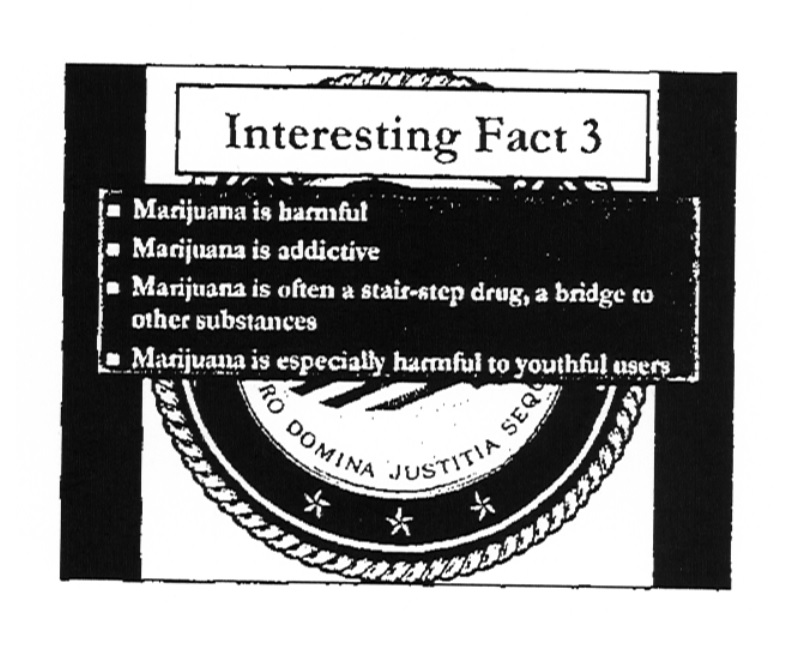
The same slide asserts that medicinal pot carries a “high potential for abuse,” and that there is a “lack of accepted safety for the use of the drug under medical supervision.” The next slams marijuana as harmful and addictive, and classifies it as a “stair-step drug” that may become a “bridge” to abuse of other substances.
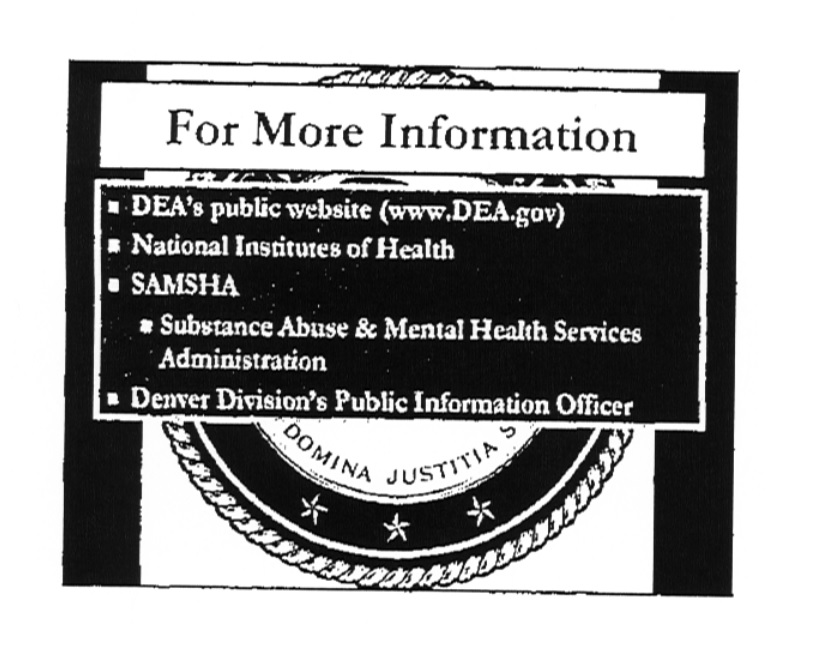
To close the section, the DEA trainer refers curious agents to the National Institutes of Health for more information on the adverse impacts of marijuana intake. Interestingly, in the very same year as the presentation, the NIH and the National Cancer Institute published an overview of the usefulness of cannabinoids in treating cancer. A request by Phil Mocek previously disclosed the NCI’s contentious revision process for its review of cannabis and cannabinoids as cancer treatment.
Even as federal scientists cautiously confirmed that marijuana compounds have medicinal value, then, one DEA lawyer was teaching law enforcement precisely the opposite.
The full presentation been embedded below, and you can read the rest on the request page.
Image by shay sowden via Wikimedia Commons and is licenced under and is licensed under CC BY 2.0




